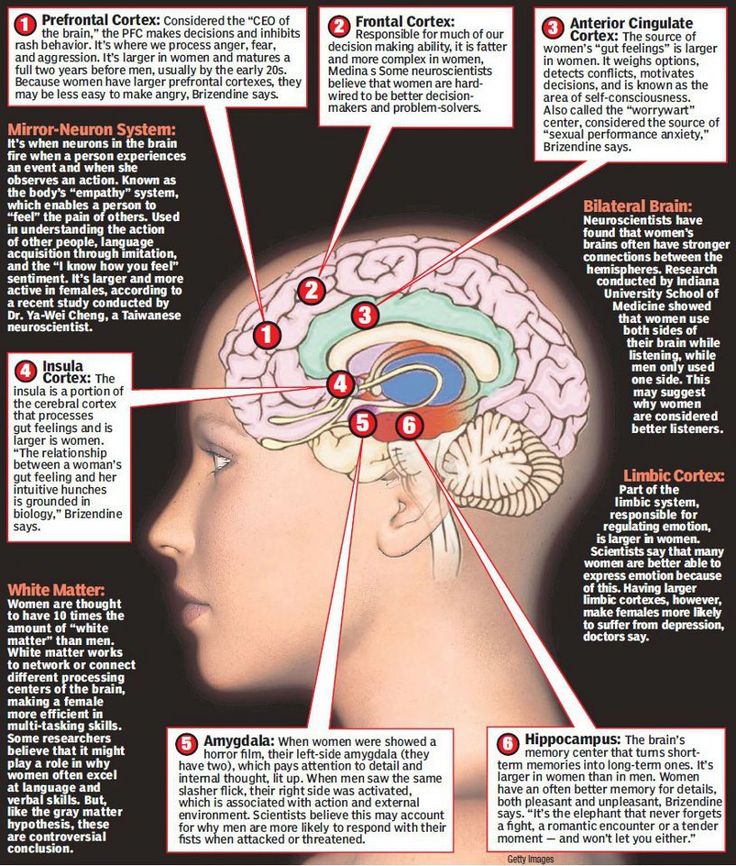Developing a wellness toolbox
Developing a Wellness Toolbox
Medically reviewed by Scientific Advisory Board — By Mary Ellen Copeland, Ph.D. on May 17, 2016
The first step in developing your own Wellness Recovery Action Plan (WRAP) is to develop a Wellness Toolbox. This is a list of things you have done in the past, or could do, to help yourself stay well, and things you could do to help yourself feel better when you are not doing well. You will use these “tools” to develop your own WRAP.
Insert several sheets of paper in the front of your binder. List on these sheets the tools, strategies and skills you need to use on a daily basis to keep yourself well, along with those you use frequently or occasionally to help yourself feel better and to relieve troubling symptoms. Include things that you have done in the past, things that you have heard of and thought you might like to try, and things that have been recommended to you by health care providers and other supporters.
You can get ideas on other tools from self-help books, including those by Mary Ellen Copeland: The Depression Workbook: A Guide to Living With Depression and Manic Depression and Living Without Depression and Manic Depression: A Guide to Maintaining Mood Stability Depression, The Worry Control Book, Winning Against Relapse, Healing the Trauma of Abuse, The Loneliness Workbook. You can get other ideas from the audiotapes Winning Against Relapse Program and Strategies for Living with Depression and Manic Depression.
The following list includes the tools that are most commonly used to stay well and help relieve symptoms:
- Talk to a friend. Many people find this to be really helpful
- Talk to a health care professional
- Peer counseling or exchange listening
- Focusing exercises
- Relaxation and stress reduction exercises
- Guided imagery
- Journaling (writing in a notebook)
- Creative affirming activities
- Exercise
- Diet considerations
- Using a lightbox
- Extra rest
- Take time off from home or work responsibilities
- Hot packs or cold packs
- Take medications, vitamins, minerals, herbal supplements
- Attend a support group
- See your counselor
- Do something “normal” like washing your hair, shaving or going to work
- Get a medication check
- Get a second opinion
- Call a warm or hot line
- Surround yourself with people who are positive, affirming and loving
- Wear something that makes you feel good
- Look through old pictures, scrapbooks and photo albums
- Make a list of your accomplishments
- Spend ten minutes writing down everything good you can think of about yourself
- Do something that makes you laugh
- Do something special for someone else
- Get some little things done
- Repeat positive affirmations
- Focus on and appreciate what is happening right now
- Take a warm bath
- Listen to music, make music or sing
Your list of tools could also include things you want to avoid such as:
- alcohol, sugar and caffeine
- going to bars
- getting overtired
- certain people
Refer to these lists as you develop your Wellness Recovery Action Plan.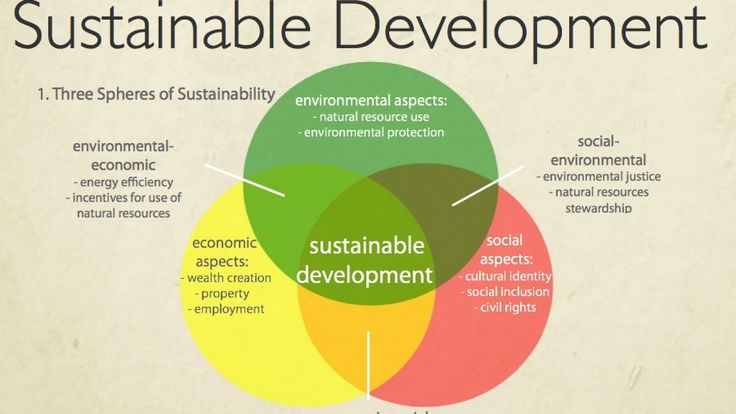 Keep it in the front of your binder so you can use it whenever you feel you need to revise all or parts of your plan.
Keep it in the front of your binder so you can use it whenever you feel you need to revise all or parts of your plan.
Mary Ellen Copeland, Ph.D. is an author, educator and mental health recovery advocate, as well as the developer of WRAP (Wellness Recovery Action Plan). To learn more about her books, such as the popular The Depression Workbook and Wellness Recovery Action Plan, her other writings, and WRAP, please visit her website, Mental Health Recovery and WRAP. Reprinted here with permission.
Developing a Wellness Toolbox for Your Mental Health
The COVID-19 pandemic is harming the mental health of many Americans — 53% of Kaiser Family Foundation research report respondents say the pandemic is impacting their mental health. But mental health concerns are not a new phenomenon. According to the American Psychological Association, mental health issues such as anxiety and depression have been a growing problem in the United States for over a decade, impacting millions of individuals every year.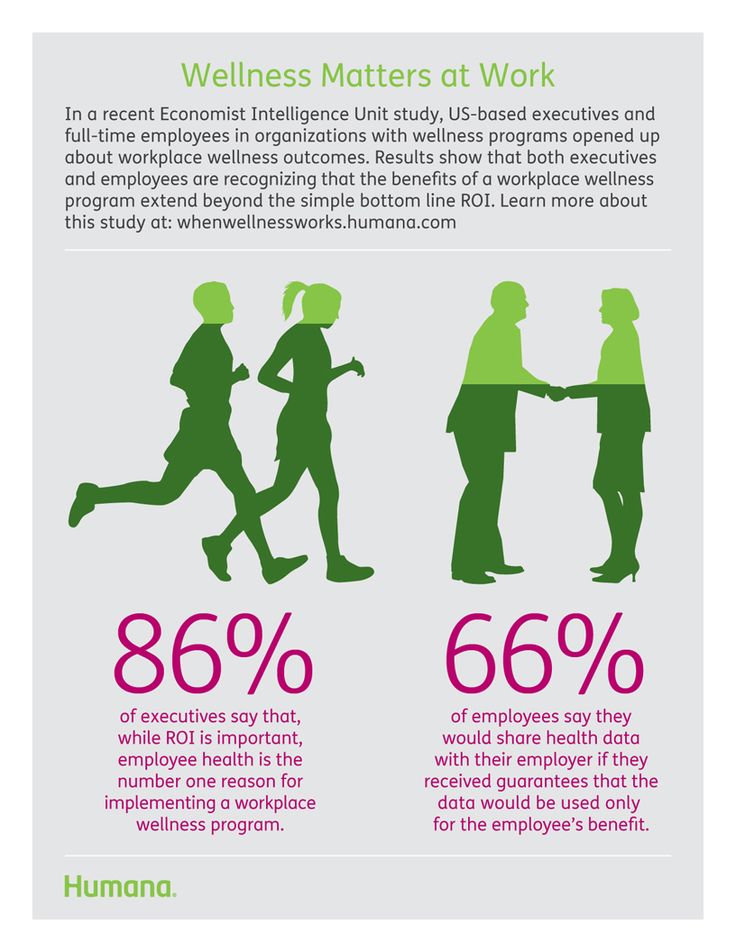 Data from Mental Health America (MHA) highlights that 19% of U.S. adults are affected with mental illness and nearly 14% of young people (ages 12 to 17) have struggled with a major depressive episode.
Data from Mental Health America (MHA) highlights that 19% of U.S. adults are affected with mental illness and nearly 14% of young people (ages 12 to 17) have struggled with a major depressive episode.
A wellness toolbox can provide individuals with essential coping skills, tools, activities, and resources that can help them address negative moods, reduce stress, and alleviate anxiety and depression. But because everyone responds differently to stressful or difficult life events, the best tools to help maintain a healthy mental state will vary from person to person.
For nurses looking to help individuals with mental health issues overcome life’s challenges, the online Bachelor of Science in Nursing to Doctor of Nursing Practice (BSN-DNP) from Hawai’i Pacific University and its Psychiatric Mental Health Nurse Practitioner concentration can prepare them with the knowledge and skills to guide patients on a path toward better mental health. One way they can do this is by helping individuals struggling with mental illness develop a customized wellness toolbox that supports their unique needs.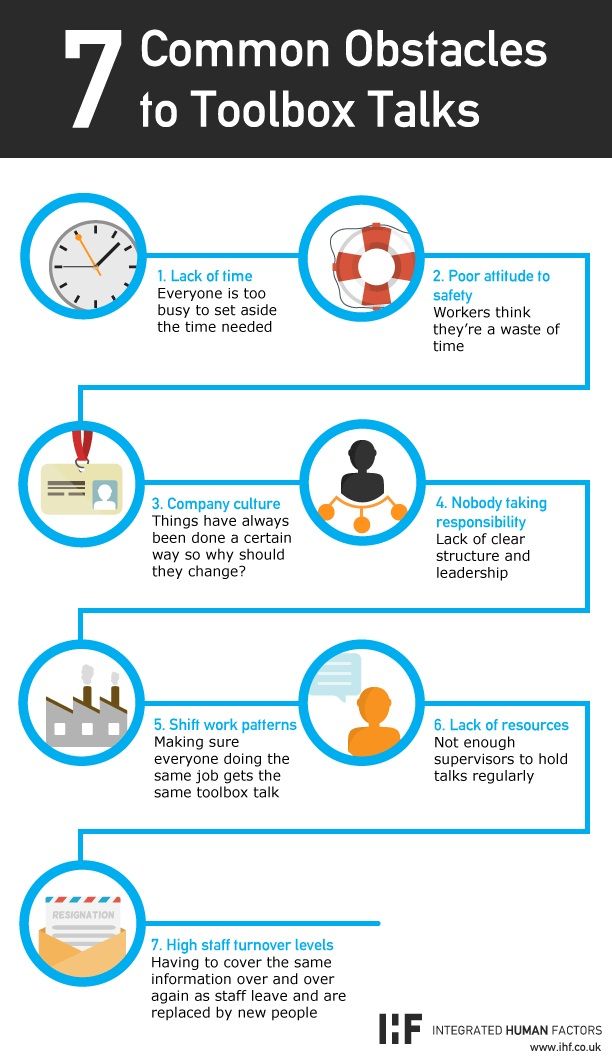
What Are Wellness Tools for Mental Health?
When professional electricians or plumbers go on-site to fix a problem, whether they are restoring power or repairing a leaky pipe, they bring along tools of the trade to do their work. These tools are contained in a toolbox for easy access.
Similarly, a wellness toolbox houses all the tools an individual can use to overcome an obstacle, barrier, or challenge that may hamper their journey to a healthier state of mind. A wellness toolbox includes strategies, skills, and resources that are accessible at any time to help an individual cope with tough times and improve their mental and emotional wellness. Individuals need to include wellness tools for mental health that have proven to be effective in helping them feel better and relieve troubling symptoms in the past.
Wellness tools for mental health can include self-care activities that individuals can do by themselves, for example, journaling, exercising, or taking a warm bath. By devoting time to self-care, a person can cultivate a greater sense of self-worth and develop a more positive outlook. Many self-care activities are available to choose from, including the following:
By devoting time to self-care, a person can cultivate a greater sense of self-worth and develop a more positive outlook. Many self-care activities are available to choose from, including the following:
- Riding a bike
- Taking a meditative walk in nature
- Performing breathing or mindfulness exercises
- Drawing, painting, or pottery
- Writing down accomplishments
- Listening to music
- Doing a routine activity, like washing dishes or putting away laundry
- Taking a break in a quiet setting
- Including healthy food choices in their diet
- Limiting screen time
- Reading a book
- Making a to-do list
Other tools can be more social in nature, involving person-to-person interactions such as meeting friends for coffee or doing something special with a loved one. Social interactions can help individuals build a sense of well-being because they promote feelings of belonging and create opportunities for a positive feedback loop — a compliment from a friend, for example, can brighten up a person’s day. Or simply enjoying the company of someone else can lead to smiling and laughter. Wellness tools for mental health that involve social interaction include the following:
Or simply enjoying the company of someone else can lead to smiling and laughter. Wellness tools for mental health that involve social interaction include the following:
- Going for a walk with a friend
- Attending a support group
- Meeting new people during an outing, like at a museum
- Enrolling in art classes at a local community center
- Volunteering at a food bank
- Playing a team sport, like basketball or tennis
- Helping at a community garden
- Joining a hobby club
- Participating in a yoga or tai chi class
It’s key to note that wellness tools for mental health are not replacements for prescribed medicines. In specific scenarios, professional help may be needed. Signs that may indicate a need for professional help include sleep problems, appetite changes, difficulty concentrating, and loss of interest in enjoyable activities.
These symptoms may indicate a deeper issue, and require an appointment to see a counselor or talk to a health professional. Depending on the individual’s need, the professional can guide them toward solutions to help them overcome their mental health challenges. Common types of mental health providers include the following:
Depending on the individual’s need, the professional can guide them toward solutions to help them overcome their mental health challenges. Common types of mental health providers include the following:
- Psychiatrist: Mental health specialists with a Doctor of Medicine (MD) or Doctor of Osteopathic Medicine (DO)
- Psychologist: Mental health specialists with a doctoral degree (PhD, PsyD, or EdD)
- Psychiatric mental health nurse practitioner: Mental health specialists who are psychiatric mental health advanced practice registered nurses with at least a master’s degree
- Licensed clinical social worker: Mental health specialists with a master’s degree in social work (MSW) or sometimes a doctorate in social work (DSW or PhD)
Building a Plan: Wellness Toolbox Examples
The previous wellness toolbox examples show the different ways individuals can improve their mental and emotional wellness. However, an effective plan is more than just a list.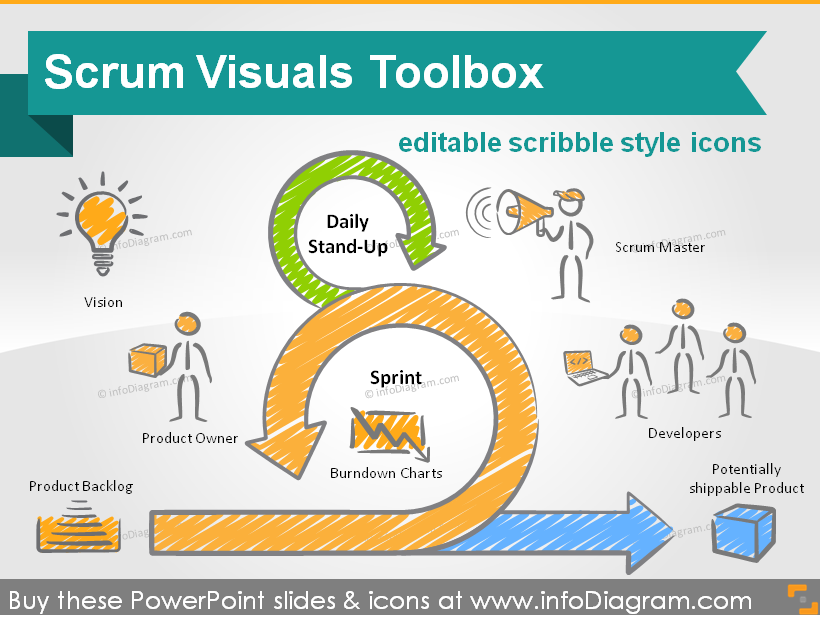 Wellness toolboxes should be organized into the following connected categories to create a cohesive plan designed to mitigate the effects of mental health concerns.
Wellness toolboxes should be organized into the following connected categories to create a cohesive plan designed to mitigate the effects of mental health concerns.
Interpersonal
This category focuses on the relationships that can strengthen an individual’s mental health. Relationships can help ward off loneliness, provide individuals with a sense of connection and purpose in life, and serve as a foundation to a social support structure. Activities to build up this category include nurturing friendships, participating in peer counseling, talking to health care professionals, and being part of a support group.
Communal
The communal category encompasses ways of being part of a community. Types of activities include getting involved in community projects, volunteering for an organization, collecting donations for a nonprofit, or participating in fundraising projects. Working in a community connects people working for a common cause and creates opportunities to solve problems collaboratively or share humor and frustrations, which can help reduce anxiety and improve mental well-being.
Self-Care
Some individuals, particularly caregivers, often shoulder many responsibilities or are so focused on helping others that they neglect their personal needs. But by neglecting self-care, individuals put themselves at risk of becoming depleted — mentally, emotionally, and physically. Self-care activities such as eating right, exercising, and getting sufficient sleep can improve physical, mental, and emotional health.
Spirituality
Spirituality is centered on some of life’s biggest questions. What is our purpose here on Earth? How are we connected to nature and to everyone else? What does the future hold? In looking for answers, common spiritual practices such as meditation, contemplation, prayer, and having hope positively impact an individual’s overall mental well-being. Regular religious practice, such as attending a weekly religious service with others, can help a person become more connected to others and build sustaining relationships. Soul-nourishing experiences can also come in the form of solitude, nature walks, and making a list of all the things in life to be thankful for.
Developing Positive Coping Strategies for Mental Health
While going for a walk can help an individual feel better in a time of crisis, for someone else, the ticket to improving their mental health may be to watch a movie. There is no one-size-fits-all wellness toolbox.
Health care professionals can help individuals develop positive mental health coping strategies that are personalized and aligned with the individual’s specific needs and personality. For example, a Nursing Times article describes “five activities most beneficial to feeling and functioning well.” These include connecting with people, being active, taking notice (being aware of the present), learning continuously, and giving.
Psychiatric mental health nurse practitioners (PMHNPs) can assess patients, diagnose illness, prescribe medication, and provide integrative therapy interventions. PMHNPs can also create evidence-based models for their patients’ wellness toolboxes that are most likely to promote the patients’ individual well-being.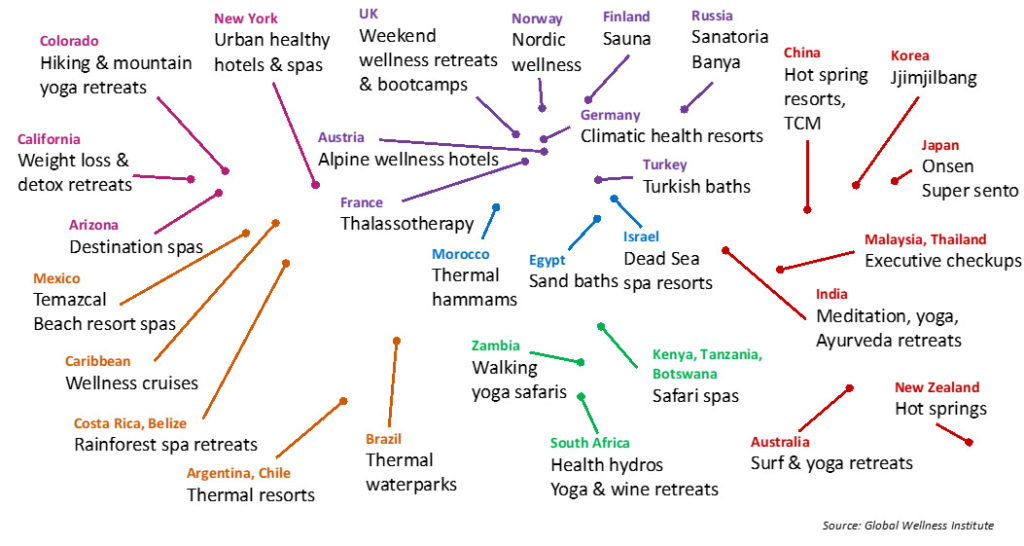 By combining these treatment options with wellness strategies, PMHNPs can help their patients gain significant ground in achieving mental health.
By combining these treatment options with wellness strategies, PMHNPs can help their patients gain significant ground in achieving mental health.
Nurse practitioners can help individuals develop positive mental health coping strategies by:
- Working with patients to determine which types of strategies are realistic and suit their mental health needs
- Providing patients with guidance on exercises they can do on their own, like practicing mindfulness or breathing exercises
- Educating patients and their families to help fill in knowledge gaps about self-care activities
- Helping individuals stick to their plans and walking them through activities in sessions
- Reassessing the effectiveness of a patient’s wellness toolbox and making adjustments as needed
- Encouraging healthy living and behaviors, including exercise and better nutrition, and elimination of bad habits
Organizations focused on providing services to individuals struggling with mental health issues or that advocate on their behalf offer numerous resources to help individuals develop wellness tools on their own. Here are 10 resources that can help people develop positive mental health coping strategies on their own:
Here are 10 resources that can help people develop positive mental health coping strategies on their own:
- Centers for Disease Control and Prevention, Coping with Stress: Provides various strategies for coping with stress, and includes several links to mental health and crisis resources
- Cleveland Clinic, Stress: Coping with Life’s Stressors: Includes common coping mechanisms and strategies to effectively deal with stress
- Depression and Bipolar Support Alliance, Wellness Tracker: Helps individuals with depression or bipolar disorder to understand the changes in their mood and gain more insight into what coping strategies for mental health work best for them
- HelpGuide, “Building Better Mental Health”: Discusses six strategies for improving mental health and well-being
- Johns Hopkins Medicine, Develop a Battery of Coping Skills: Focuses on 10 strategies to build resilience and develop coping skills
- Mayo Clinic, “Resilience: Build Skills to Endure Hardship”: Explains how resilience can help individuals get past stressors, including key strategies
- MedlinePlus, How to Improve Mental Health: Describes mental health and why it’s important, as well as strategies for improving mental health
- National Alliance on Mental Illness, “Self-Help Techniques for Coping with Mental Illness”: Lists and describes coping mechanisms and techniques recommended by mental health professionals
- National Institutes of Health, “Social Wellness Checklist”: Provides tips for building support systems through connecting with others
- Verywell Mind, “Healthy Coping Skills for Uncomfortable Emotions”: Shares insights on healthy emotion-focused strategies and using a problem-solving approach
Additionally, apps, podcasts, articles, and other resources designed to help individuals in their mental health journeys are available. Examples include:
- Calm: This app provides guidance on meditation, building mental resilience, and improving sleep.
- Meditation Minis: This podcast guides listeners through short meditations.
- MyStrength: This app is designed to help users improve their awareness and adapt to life.
- The Positive Psychology Podcast: Various topics such as mindfulness and strengths are covered in this podcast.
Mapping the Road to Mental Wellness
Unaddressed mental health issues can lead to substance use disorder — almost 8% of adults and nearly 4% of young people have reported a substance use disorder, according to an MHA report. Mental health issues are also tied to suicidal thoughts. MHA’s Prevalence of Mental Illness 2021 report states that more than 10.7 million Americans have reported serious thoughts of suicide, an increase of 460,000 people over the previous year.
The road to mental wellness is one best taken with tools at one’s side. By developing a wellness toolbox, individuals can have access to essential strategies and resources to help them deal with mental health concerns. For individuals who seek professional guidance, nurses and health care professionals can help them build a wellness toolbox.
For nurses looking to help individuals develop solid mental health, enrolling in Hawai’i Pacific University’s online BSN to DNP program and its Psychiatric Mental Health Nurse Practitioner concentration can help them prepare to make an impact on the lives of individuals undergoing a mental health wellness journey.
The program’s courses — including Advanced Pathophysiology, Advanced Psychiatric/Mental Health Nursing, and Evidence Based Practice for Advanced Nursing — can prepare students with the skills and knowledge necessary to develop positive coping strategies for mental health based on evidence-based models.
Learn how Hawai’i Pacific University’s online BSN to DNP program and its Psychiatric Mental Health Nurse Practitioner concentration can help you care for individuals with mental health challenges and fill the increasing demand for skilled mental health practitioners.
Recommended Readings
Empathy in Health Care: The Role of Psychiatric Mental Health Nurse Practitioners
Which Nurse Practitioner Specialty Is Right for Me?
Underserved Populations in Healthcare: 5 Ways to Bridge the Gap
Sources:
American Association of Nurse Practitioners, Nurse Practitioner (NP) Wellness
American Psychological Association, “Mental Health Issues Increased Significantly in Young Adults Over Last Decade”
Kaiser Family Foundation, “KFF Health Tracking Poll — July 2020”
Kaiser Permanente, Wellness Resources: Self-Care Tools, Tips, and Activities
Mayo Clinic, “Mental Health Providers: Tips on Finding One”
Mental Health America, Get Professional Help If You Need It
Mental Health America, How Connections Help
Mental Health America, Prevalence of Mental Illness 2021
Mental Health America, Take Care of Your Spirit
National Institute of Mental Health, Caring for Your Mental Health
Nursing Times, “The Five Ways to Wellbeing Model: A Framework for Nurses and Patients”
PsychCentral, “Developing a Wellness Toolbox”
What is a Python toolbox?—ArcGIS Pro
Top of page
In this section
- Create a Python toolbox
- Sample Python toolbox
Python toolboxes are geoprocessing toolboxes created entirely in Python. The Python toolbox and the tools it contains look and act exactly like tools and toolboxes created in any other way. A Python toolbox is a Python .pyt file that defines a toolbox and one or more tools.
Once created, a tool in a Python toolbox provides many benefits:
- The script tool you create is as integral to geoprocessing as any other system tool—you can open it in the Catalog pane, use it in ModelBuilder and the Python window, and call it from another script.
- You can write messages to the Geoprocessing History window and tool dialog box.
- Using the built-in documentation tools, you can provide documentation.
- When a script is run as a script tool, arcpy is notified from which application it was called. Application settings such as arcpy.env.overwriteOutput and arcpy.env.scratchWorkspace are available from ArcPy in a script tool.
Creating a Python toolbox
To create a Python toolbox, right-click the folder where you want to create a new toolbox, and then click New > Python Toolbox.
Initially, a Python toolbox will contain two Python classes: a Toolbox class that defines the characteristics of the toolbox, and a Python Tool class that stores the geoprocessing tool code itself.
Start of work
| Start of work | Create a new set of tools Python Editing a set of tools Python | ||
| Task of your tool 9000 | Determination of the tool | ||
| Taxi Tax | Definition of parameters in the Python Tools setting settings in the Python | settings tool in Python toolbox | |
| Python Codes Codes | Access to Python Creation Python Create |
Sample Python toolbox
The following is an example of a Python toolbox that contains one tool. The CalculateSinuosity tool adds a margin and calculates the sinuosity of an object, measured by the nature of the line's curves.
To use this tool, you must copy and paste the sample code into any Python-enabled development environment (IDE), such as Notepad, and save the file with a .pyt extension.
import arcpy class Toolbox(object): def __init__(self): self.label = "Sinuosity toolbox" self.alias = "sinuosity" # List of tool classes associated with this toolbox self.tools = [CalculateSinuosity] class CalculateSinuosity(object): def __init__(self): self.label = "Calculate Sinuosity" self.description = "Sinuosity measures the amount that a river " + \ "meanders within its valley, calculated by " + \ "dividing total stream length by valley length." def getParameterInfo(self): #Define parameter definitions # Input Features parameter in_features = arcpy.Parameter( displayName="Input Features", name="in_features", datatype="GPFeatureLayer", parameterType="Required", direction="Input") in_features.filter.list = ["Polyline"] # Sinuosity Field parameter sinuosity_field = arcpy.Parameter( displayName="Sinuosity Field", name="sinuosity_field", datatype="Field", parameterType="Optional", direction="Input") sinuosity_field.value = "sinuosity" # Derived Output Features parameter out_features = arcpy.Parameter( displayName="Output Features", name="out_features", datatype="GPFeatureLayer", parameterType="Derived", direction="Output") out_features.parameterDependencies = [in_features.name] out_features.schema.clone = True parameters = [in_features, sinuosity_field, out_features] return parameters def isLicensed(self): return True def updateParameters(self, parameters): if parameters[0].
altered: parameters[1].value = arcpy.ValidateFieldName(parameters[1].value, parameters[0].value) return def updateMessages(self, parameters): return def execute(self, parameters, messages): inFeatures = parameters[0].valueAsText fieldName = parameters[1].valueAsText if fieldName in ["#", "", None]: fieldName = "sinuosity" arcpy.AddField_management(inFeatures, fieldName, 'DOUBLE') expression = ''' import math def getSinuosity(shape): length = shape length d = math.sqrt((shape.firstPoint.X - shape.lastPoint.X) ** 2 + (shape.firstPoint.Y - shape.lastPoint.Y) ** 2) return d/length ''' arcpy.CalculateField_management(inFeatures, fieldName, 'getSinuosity(!shape!)', 'PYTHON_9.3', expression) def postExecute(self, parameters): return
Related sections
Feedback on this section?
In this section
- Creating a Python toolbox
- An example of a Python toolbox
33 useful tools for web development
Let's figure out what tools and useful programs a novice developer should pay attention to. The text has the following sections:
- Local development environment
- Code editors. Version control systems
- Browser tools. Frameworks and Libraries
- Package Management Systems
- Collaboration Tools
- Containerization Tools
- Web Performance Testing
- Web Developer Resources
Local Development Environment
900 a resource to, for example, view a product showcase, learn about a brand, or contact company representatives. They see contact forms, images, text, menus, and videos. The site and elements exist in real time and are available to all visitors. But what happens during the development phase? Developers always use local environments to build, test, and improve their software products. If you come up with a great idea for a web service, then local development environments will help you run a web server right on your computer, and you can defer the cost of hosting a site until the project is ready. Such a local environment can be assembled and organized independently, but for established combinations of some technologies, there are already ready-made solutions - let's start with them.
1. MAMP
MAMP stands for Macintosh, Apache, MySQL, and PHP. After installing this solution, you will get a working web server with technologies encrypted in the name.
Like many local development environment tools, MAMP is free. But there is also a professional version of MAMP for Windows and Mac. After payment, the developer will be able to work with an unlimited number of hosts, and using the cloud function, he will be able to work on projects on different computers and test applications on mobile devices in the local network.
A key feature of MAMP is its simple and intuitive interface. To start the server, you do not need to be an experienced administrator - just read the instructions carefully, after which you will be able to launch the local version of your site without any extra effort.
2. XAMPP
XAMPP is one of the most popular development environments for PHP. This is a set of programs that consists of a web server, a database, a PHP interpreter, a phpMyAdmin panel for managing the MySQL server, and other tools.
The main purpose of this product is to make application development really convenient. XAMPP is easy to install: just download the installer from the official site, run it, and in a few minutes the computer will be completely ready for developing web applications.
XAMPP is an open source local environment. It has been around for more than 10 years, so a huge community has formed around it, which is constantly improving the product.
Code editors
Programmers spend a significant part of their working time in code editors. And the debate about which editor is better is one of the favorite and hot topics for most of them. There are many opinions on this subject, and each product has its own army of ardent fans.
According to research, most developers use Visual Studio Code, Sublime Text, or IntelliJ IDEA. These three tools scale from a simple code editor to a complete integrated development environment (IDE).
3. Visual Studio Code
VSCode is an open source editor developed by Microsoft Corporation. Since its launch in 2015, the number of Visual Studio Code users has grown steadily, with 71% of web developers using it daily.
Editor Interface Combined with a huge library of extensions, VSCode is flexible enough to meet almost any development need. You can install linters and formatters for the language of your choice, as well as a huge number of other additional extensions, such as Docker or Vagrant.
Visual Studio Code supports JavaScript, Node.js, and TypeScript by default. But at the same time, the extension ecosystem is so rich that you can find utilities to support almost any language. What's more, VSCode has excellent integration with other Microsoft products, most notably GitHub.
Visual Studio Code is completely free and ideal for most developers.
4. Notepad++
Notepad++ can't replace the advanced code editors that professional programmers use, but it's ideal for working with simple scripts.
Notepad is the default text editor in the Windows operating system. Notepad++ looks like its cousin, but it includes development-specific features:
- tabbed display and multi-window mode;
- support for about 80 programming languages;
- autocomplete.
Notepad ++ is handy when you need to quickly make a prototype, work on a business trip or quickly open and write code in haste.
5. The JetBrains Suite
Among paid code editors, JetBrains is one of the most popular and in demand. When it comes to a complete development IDE, the JetBrains suite of solutions will be at the top of the list. Although the company offers many editors, they are all derivatives of the same IntelliJ IDEA editor.
JetBrains has gone to great lengths to allow developers to write code rather than go into customization. Many people use these products because of their reliability and flexibility in project management.
In addition to the paid subscription version, IntelliJ also offers its tools for free to students, teachers, and startup employees.
Version control systems
Centralized code storage, documenting changes, and enabling team development are all covered by version control systems, or VCS.
6. Git
Git is a key tool for any modern developer. In simple words, it is a tool for documenting the changes you make to the project code and saving it in the repositories. It's also a handy collaborative development tool.
Git is not the only version control system available, but the most popular. Users love this solution for its rich features and ease of use. The basic source control commands are single-word functions prefaced with git. They are often used from the command line. For example:
This expression adds the file file.php to the tracked files area. In other words, you'll save your changes to the new file without modifying the previous version of the file, allowing you to always revert to the original view if something goes wrong. You can apply this command to a single file or to an entire project. If you're new to Git and VCS, GitLab has a great beginner's guide to using Git from the command line.
7. GitHub
GitHub is a web service for collaborative development via Git. Translated from English "hub" means "junction station". GitHub is the largest host for versioned data streams.
This solution gives users much more than just Git: it provides automated testing tools and advanced collaboration features.
GitHub is highly regarded by many users, because at its core it is a social network for developers. Since its inception in 2008, GitHub has connected tens of millions of people, giving them the opportunity to realize their ideas and share information freely.
On the platform, you can create an account and post your code, work together on any open-source projects, and you can host your site on the GitHub Pages service for free. Giants such as Facebook, Twitter, Google, Apple and Valve keep their official repositories on GitHub.
8. GitLab
GitLab is a more "isolated" platform and may not be well suited to open source projects. GitHub bills itself as a "development platform" while GitLab focuses more on DevOps.
GitLab now provides the most comprehensive list of DevOps features for organizations. For most developers, the free GitLab tier will suffice. And with an annual subscription, you get access to your code and performance analytics, about 10,000 minutes of CI / CD work, and other nice features.
9. Sourcetree
Sourcetree is positioned as a free cross-platform visual version control client for Git and Mercurial. In fact, there are many such solutions: GitKraken, Sublime Merge, SmartGit, GitHub Desktop. Consider Sourcetree as one of the representatives of this set.
Sourcetree can do simple things, such as highlighting changes from the last commit. At the same time, team leaders can view the list of changes, switch between branches, and customize the visual display of the code using graphs and information tabs.
Sourcetree applianceBrowser tools
Modern browsers almost always include built-in developer tools that help you analyze the internal code of a site and then adapt and integrate some of its elements in other projects.
You will need these tools if you are developing a front-end project. The Chrome browser implements one of the largest sets of useful goodies. There are fewer tools in other browsers, but they have their advantages.
When using the developer tools in your browser of choice, you will most likely be working in the console a lot. The console is a bridge to programming for beginners because you can run JavaScript in the browser, which is the easiest way to test code snippets.
10. Chrome Developer Tools
DevTools Chrome is reputed for its rich feature set and diagnostic capabilities. In the "Elements" tab, you can view the source code of the page. The Performance tab shows page loading information. The Security tab contains useful information about the security of the website. You can also create Google Lighthouse reports based on Chromium.
Google Lighthouse report example11. Firefox Developer Tools
Firefox is still a popular browser despite Google's dominance. Firebug used to be praised by developers for being the leader in in-browser debugging, but the project was scrapped and replaced by Firefox Developer Tools. They implement a key set of features for viewing the site's source code. It is called Inspector and it has several additional sets: Debugger, Memory, Storage.
Frameworks and Libraries
Frameworks and Libraries are key elements in choosing the right development tools.
Frameworks are large pieces of pre-written code that help you get started on your projects faster. A framework is similar to a framework for writing web applications: it defines the structure, sets the rules, and provides the necessary set of tools for development.
In turn, a library is a set of ready-made functions, classes and objects for solving some problems.
12. React.js
React.js is a popular JavaScript library developed by Facebook. If you need a modern and dynamic user interface, React is worth a look. It uses an extended JavaScript language syntax called JSX to create elements:0003
React is powerful and should be on your must-learn list, especially if you're into the frontend. The tool is very popular and widespread, which means it may be required by your future employer.
13. Vue.js
Vue.js is another JavaScript framework for building user interfaces. It is based on presentation layers and is great for integrating with other libraries and frameworks. View - everything that is directly related to the component and its template. For example, changing reactive properties, changing states, and so on.
Developers find Vue.js easy to learn, as only JavaScript and HTML knowledge can be used to work with it. Vue.js has its own official and fairly detailed documentation in many languages.
14. Svelte.js
One important rule in development is to make sure your sites work and work correctly in as many browsers as possible. Svelte.js will help you check which browsers support your site.
There are only about 40 functions in the Svelte API, so it should be easy to get started. You can expand this list of features by adding your own.
15. Bootstrap
Responsiveness and fast work on mobile devices is a standard requirement for a modern web project. Given that users are more likely to turn to mobile browsers than desktop ones, developers need tools to develop sites specifically targeted at mobile devices.
Bootstrap is a great open source tool for web development with HTML, CSS and JS. The latest version of the framework was released under the motto: "Mobile First", which means the priority of adaptation to mobile devices. Virtually the entire product has been redesigned from the ground up to support low screen resolutions and scaling.
16. Bulma
The main advantage of the Bulma framework is its lightness. It has only CSS, no Javascript code. This helps the web page load faster. And the faster it loads, the more convenient and pleasant it is for the visitor to be on it.
Bulma uses state-of-the-art technologies such as flexbox column layout. On Bulma, you create fully responsive pages for mobile devices. All in all, it's a simple open source framework that can be adapted to almost any project needs.
17. Express.js
If you've been developing for the Node.js platform, you've probably heard of Express.js. It is a simple, well-documented, well-maintained, and most downloaded front-end framework.
Its main advantage is that it helps organize server components in a familiar format: Model-View-Controller (MVC). It is designed for building web applications and APIs.
18. Laravel
Development in PHP requires a minimum set of knowledge, because it is one of the programming languages with a very low entry threshold. Given the prevalence of PHP, it makes sense to consider the Laravel framework.
Although Laravel itself is a PHP framework, don't underestimate it. This is a whole ecosystem for web development. Even if you don't use much of the framework itself, you can use Laravel's Homestead, a Vagrant-based local development environment that doesn't require you to install PHP, a web server, or any other server software on your local machine.
If you are a PHP developer, Laravel will probably become the main tool in your workflow. The framework has a lot more features than you might imagine.
19. Django
Many famous sites such as Instagram, Uber, Reddit and Pinterest are based on the Django framework. It uses the Python programming language to build server-side web applications.
Python is the second most popular programming language on GitHub (after JavaScript). It is loved for its clear and concise syntax: when writing code in Python, you need to type much less characters than in most programming languages. This means that development is many times faster than in other languages.
The Django framework is quite popular, this trend has been observed for many years, so there are many courses on the Internet to learn it. The framework forms a mature, progressive and large community around itself. It also often appears in the list of job requirements, so the ability to work with it opens up a good future prospect for the developer.
20. Ruby on Rails
A few years ago, the Ruby programming language was a favorite among novice programmers and the main PHP alternative for scripting. It is often compared to Python for its ease of use.
Like Django, Ruby on Rails has been and is a favorite of many developers. The framework is used as a back-end infrastructure in many websites. In general, Ruby on Rails is a good choice if you want a wide range of useful defaults that you can change if needed.
Ruby on Rails can save you the time you normally spend on development, but it's not the best framework for speed-critical projects.
Package management systems
Package managers help you download extensions and install dependencies from the command line. It is important to master a set of basic commands, and to know where to find additional information.
21. Node Package Manager (npm)
In most cases, it is much easier and more convenient to use the package manager from the command line, because this method provides high speed download and installation of files from the Internet.
Node Package Manager (npm) provides just such an opportunity. It's a handy tool, originally designed for JavaScript, but not limited to it. For example, searching for packages for React returns over 155,000 results.
22. PIP
When developing software in Python, it is often necessary to use a package that is not currently on your computer. To get out of this situation, you can use PIP. It is a package manager that allows you to install and manage extensions written in Python. The whole process of installing a package comes down to issuing a single console command:
If you have worked with other programming languages, the concept of PIP may sound familiar to you. PIP is like npm in Javascript, composer in PHP, or gem in Ruby.
PIP comes with Python and is available after you install it. If for some reason PIP is not installed on your system, this is an easy fix.
Collaboration tools
Modern development today almost always involves teamwork. To synchronize actions in a group, it is necessary to use special software that will make processes transparent, and statuses and stages understandable. This will make it easier for the team to achieve the goals of the project.
23. Jira
With Jira, you get a lot of features out of the box. For example, you can use kanban boards to organize tasks and sprints. A Kanban board is a visualization tool that allows you to streamline your workflow. You can also apply your task status tracking technique adapted to your methodology and project.
Jira focuses on a repeatable workflow: plan, track, release, and report. The user can switch between sprints, thanks to which each member of the working group can be involved in several activities, and Jira will help him organize his time and not miss a single task.
The good news is that Jira is available for free, and the paid version of the program will pleasantly surprise you with a reasonable price. To use the service effectively, you need a team of at least 10 people.
24. Taskade
Taskade is a great task manager for teamwork. If you use Asana or Basecamp, then the Taskade interface will be familiar to you.
The information most requested by the user is centrally displayed on the main page: upcoming plans, hot questions, tasks for which the deadline is approaching, tasks for today and reminders. You can choose the type of views that suits you best.
At first glance, Taskade may seem sparse, but it's not. It is highly customizable, displays tasks in a user-friendly format, allows them to be managed quickly and easily, and simplifies the way to interact with the team. Due to its simplicity, it is suitable for any project and for a developer of any level.
25. Asana
Asana is a team project management application that adapts easily to different workflows.
Comprehensive reporting is the trump card of the system: at higher levels, you get access to a dashboard that displays various analytics on your team's performance.
There is another way to track the workload of each team member. In this way, Asana helps to minimize the risk of a crisis and prevents burnout of team members.
It's nice that the free version is a full-featured application and not a cut-down version of it. You can scale Asana as your team grows and include paid versions, but even those you can use for free for 30 days.
Containerization tools
Whether you're a student or an established developer, you've probably heard of "containers". Regardless of the operating system of the computer or server, you will be able to run exactly the project infrastructure that is in the container, and it will work correctly on any platform. The container that you create on your laptop will work exactly the same as on a corporate server.
26. Docker
Many people prefer to use Docker as their container-based development environment. In Docker, all processes are implemented very simply: click a button and get a virtual isolated development environment.
Docker combines an easy-to-use user interface, command line interface, and secure API. All this ensures the rapid deployment of any systems by the user's hands.
For many developers, Docker is becoming the go-to platform for building new applications. It integrates well with many other useful tools, such as GitHub and VSCode can connect to Docker for seamless collaboration.
27. LXD
LXD is a container manager for Linux distributions that supports an open source framework. It was created by the developers of Ubuntu Canonical.
You can create secure environments using unprivileged containers, control resource usage, and even manage networks. LXD is highly scalable, which means you can run thousands of compute nodes, or vice versa, simplify your work to a single task.
For cloud applications, LXD integrates with OpenNebula: the latter has official drivers for this. Try LXD and you'll find that it fits projects better than the competition, sometimes.
Website performance testing
Speed is one of the key indicators of a website. Positions in search results and sales conversion depend on it. You should control the speed with the help of special services and take measures to speed up page loading.
28. Responsively
This tool checks the display of your site on different devices. You can compare layouts next to each other by opening their display in the same window. You can also add custom extensions for Mozilla Firefox, Microsoft Edge, and Google Chrome to open your site's pages in a browser and control how they appear. We can say that Responsively is a web developer's browser.
29. Google Lighthouse
Google Lighthouse works with any web page and provides reports on their performance, search engine optimization and progressive web application (PWA).
PWA is a technology in web development that visually and functionally transforms a website into an application. For example, a site can work offline, push notifications, look and work almost as fast as a standalone app.
At first glance, Google Lighthouse and PageSpeed Insights, which is part of Google's Speed Tools suite of services, seem similar. But PageSpeed Insights uses data from real users, while Lighthouse analysis ignores user data and measures the performance of your site elements. Use both tools, especially if the goal of your project is to get to the top of the search engine results.
30. Cypress
Most end-to-end testing tools are based on Selenium, a suite of test automation tools.
At the core of Selenium is a web application testing framework implemented in JavaScript that performs tests directly in the browser.
But Cypress is going in a different direction. Its developers aim to make it easy to set up, write, and run tests. To do this, they built an architecture from scratch and focused on end-to-end testing, to the exclusion of other forms.
Web Developer Resources
If you find yourself looking for possible solutions to code problems, there are countless developers who have probably already found them before you.
31. Stack Overflow and Search Engines
Stack Overflow is known to everyone who knows at least a little bit about web development. This is a huge resource for software development questions and answers. Each thread on the portal focuses on a specific topic, and questions, answers, and users themselves are judged by the community.
Stack Overflow is known as a resource that thousands of developers turn to. In fact, this resource works as a highly specialized search engine.
32. DEV Community
DEV Community is a developer community site. On the one hand, it is a blogging platform, on the other hand, it is a way to find answers to developers' questions. The user selects the tags and people they want to follow, and their news feed turns into a stream of posts and insights.
33. Can I use…
The essence of the site is simple: you enter a CSS element into the search field, and the database returns a result asking if you can use it for a particular browser. The site also supports requests for JavaScript and HTML.
Can I use… is a knowledge base specifically for the front-end, so it will not return results for PHP, Python, or other back-end languages.
This resource will help you when you are designing an interface for multiple devices. For example, you can open a certain element and immediately see if your target browser supports it. Additionally, interesting statistics are revealed - the release date of the element and the percentage of use.
Can I use… seldom used regularly. The resource is only needed at certain stages of the project when you need to figure out what elements your target browsers support.
Summary
We have tried to show as many useful web developer tools as possible, but it is important to understand that there are so many of them that it is impossible to cover them all in one article. We have chosen the most necessary in our subjective opinion.
In addition to programming languages, be sure to learn and gradually implement new supporting tools. Then you will notice how the development process becomes more convenient, faster and more efficient. Don't be afraid to try and analyze: a wise choice of tools will always pay off in terms of time, cost and productivity.
